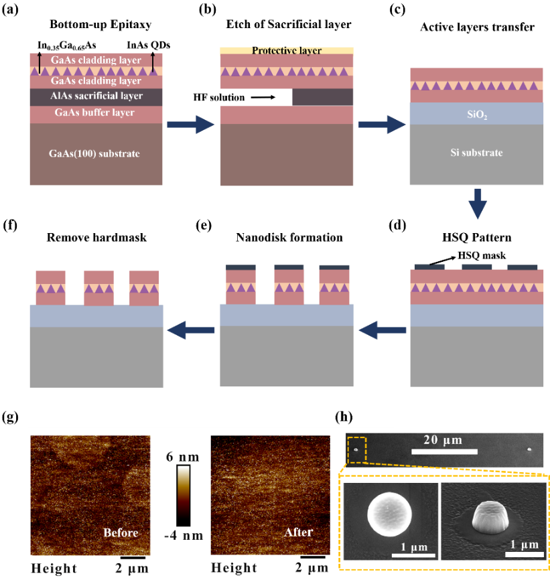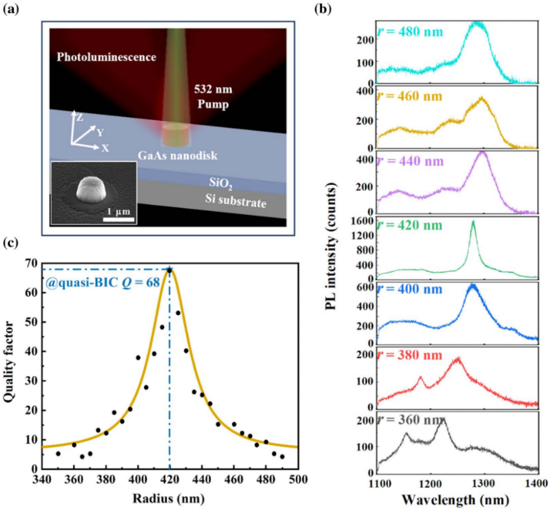Silicon optical integration technology has the advantages of large bandwidth, low cost, low power consumption, and high integration, which has been widely used in the optical interconnection of telecommunications and data communication. It also has great potential in Lidar and medical sensing and intelligent computing fields. However, as silicon is an indirect bandgap semiconductor, it cannot emit light directly, so silicon-based light source has always been a key problem to be solved in the industry.
The light source in the module and system is still implemented using III-V materials, and the mature technology in the industry mainly uses high-precision packaging to couple the external light source to the silicon optical chip into components. The hybrid integrated light source of a multi-material system is the core direction of the development of the industry. The following solutions have attracted much attention: Flip-chip hybrid integration, heterogeneous bonding, and silicon-based heteroepitaxy.
With extensive experience in the field of silicon light Flip-chip light sources and demonstration of high-performance applications on integrated chips, the Silicon Photonics team of Microsystems Institute has recently jointly proposed a subwavelength size on-chip light source implementation method combining heterogeneous integration and InAs quantum dots.
Quantum dots are nanoscale zero-dimensional structures, which are not only insensitive to dislocation defects but also possess potential properties such as low threshold current density and high operating temperature. However, direct epitaxial III-V quantum dots on silicon require a very thick buffer layer, and the process complexity is high, so there are still many difficulties for large-scale on-chip integration. Meanwhile, for richer silicon optical integration applications, the miniaturization of all kinds of on-chip devices is an important direction of industry development, including on-chip light sources.
The single-particle resonator based on the principle of multiple resonances has a variety of resonance modes, but it is difficult to be applied to an on-chip laser because of the weak local ability of the light field and the insufficient high Q value. The Friedrich-Wintgen quasi-bound states in the continuum (Quasi-BICs) are produced by the destructive interference of two resonant modes coupled to the same radiation channel and have high localization. It opens a new path for the realization of small size and array-based light emitting devices.
To address this problem, , the cooperation research group led by Prof. Aimin Wu and Prof. Qian Gong from Shanghai Institute of microsystem and information technology, Chinese Academy of Sciences, and associate Prof. Yi Jin of Zhejiang university utilized MBE (molecular beam epitaxy) growth included InAs quantum dots and strain buffer/release and GaAs cladding layer Composite structure, the composite structure is transferred to the silicon substrate (SiO2 layer) by stripping and hetero-bonding. Combined with the physical mechanism of quasi-BIC, the on-chip luminescence of the O-band at the sub-wavelength scale is realized by micro-nano processing technology. The research results are published in Photonics Research, Volume 10, No. 8, 2022 (Li Liu, Ruxue Wang, Xuyi Zhao, Wenfu Yu, Yi Jin, Qian Gong, Aimin Wu. Hogeneously integrated quantum-dot emitters efficiently driven by a quasi-BIC-supporting dielectric nanoresonator[J]. Photonics Research, 2022, 10(8):1971).
The research group combined III-V quantum dot epitaxy and heterogeneous bonding technology to eliminate lattice mismatch and avoid the complex multi-layer buffer structure of silicon-based epitaxy, which is more favorable for large-scale on-chip optical integration. The detailed process is shown in Fig. 1.

Fig. 1 Process flow of heterogeneous integrated InAs quantum dots illuminator.
Fig. 2 (a) is a schematic diagram of the structure. The nanodisk structure includes InAs quantum dots with a thickness of 2.2 atomic layers, strain buffer layer, and strain release layer of 2 nm and 6 nm respectively, GaAs cladding layer and AlAs sacrifice layer above and below. InAs quantum dots are located in the center of the nanodisk to match the field distribution of quasi-BIC mode and ensure the full interaction between light and matter. The architecture can enhance the coupling between quantum dots and quasi-BIC, to enhance photoluminescence.
Fig. 2 (b) shows the PL spectrum of resonators of different sizes. The results show that the radius size of the nano-resonator supports the quasi-BIC state at 420 nm, and the Q factor is 68 (the theoretical value reaches 229), which is up to 11 times higher than that when the quasi-BIC state is not reached, and the photoluminescence intensity is up to 8 times higher. The luminescence performance can be further enhanced by improving the quality of the composite epitaxial layer and optimizing the membrane transfer process.

Fig. 2 Experimental results of heterogeneously integrated quantum dots luminescence. (a) Schematic diagram of on-chip quantum dot luminescence experiment with quasi-BIC state, including SEM of the sample; (b) PL spectrum of resonators of InAs quantum dots with different radii in the communication band; (c) Q factors corresponding to resonators with different radii, and the blue dashed lines correspond to the appearance of quasi-BIC.
The group developed an ultra-small nano-resonator containing InAs quantum dots on a silicon substrate to achieve O-band on-chip luminescence based on the quasi-BIC. This work provides a promising solution for the realization of the silicon-based integrated on-chip light source and provides a new device of ultra-small size for large-scale optical integration. Further research on the realization of the electroluminescent on-chip light source is expected to provide a more practical solution for silicon-based luminescence.


